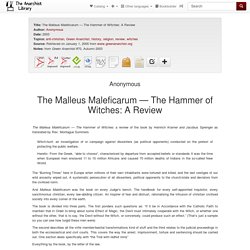

Medscape: Medscape Access. The Hole Story on Trepanation. Hippocrates endorsed its use and it’s the world’s second oldest surgical procedure following circumcision.

It’s called trepanation and it literally means drilling a hole in your head. And if you think it’s a bygone practice, think again. The practice of making a hole in the skull has been around since the Stone Age — archaeologists have found trepanned skulls dating back to 3000 B.C. Hippocrates, in his classic medical text “On Injuries of the Head,” endorsed trepanation for the treatment of head wounds.
During the middle ages it was thought the procedure was able to liberate demons from the heads of the possessed and, later on, “enlightened” Europeans did it to cure maladies ranging from meningitis to epilepsy. An instrument called a trepan is used to make the hole. That’s right, today in the 21st Century. Currently there are doctors in the world who perform trepanation and will perform one on anyone 18 years or older who consents.
In 1965, after years of experimentation, Dr. The Most Painful Medical Procedures Of Medieval Times. Painful Medical Procedures Of Medieval Times: Trepanning Eclipsing the lobotomy in terms of age and pain, trepanning involved a physician cutting a hole into the skull of an individual suffering from what some believed to be mental illness, seizures or skull fractures.

The hole was typically cut into the dura mater and, surprisingly, the survival rate was very high and chance of infection remained low. Metallic Catheters What we consider a minor nuisance in most hospitals today was once a matter of excruciating and occasional fatal pain in the middle ages. Due to various venereal diseases and a lack of antibiotics, many people suffered from a blocked bladder. “The patient sits on a man’s lap…the physician stands before the patient, inserts two fingers into the anus, pressing with his left fist over pubes.” 10 Bizarre Medieval Medical Practices. Creepy Medicine is one of the cornerstones of modern civilization—so much so that we take it for granted.

It wasn’t always the case that you could just waltz into a doctor’s office to have them cure what ailed you. In medieval times, for example, things were a lot more dangerous, and a lot stranger. 10 Boar Bile Enemas Enemas in medieval times were performed by devices called clysters. Even kings were high up on the clyster. 9 Urine Was Used As An Antiseptic Though it may not have been common, there is evidence to suggest that urine was occasionally used as an antiseptic in the Medieval Era.
This isn’t quite as insane as it seems: urine is sterile when it leaves the body and may have been a healthier alternative than most water—which came with no such guarantee of cleanliness. 8 Eye Surgery (With A Needle) During the Middle Ages, cataract surgery was performed with a thick needle. Of course, eye surgery changed rapidly once Islamic medicine began to influence European practices. 4 Trepanning. The Malleus Maleficarum — The Hammer of Witches: A Review.
The Malleus Maleficarum — The Hammer of Witches: a review of the book by Heinrich Kramer and Jacobus Sprenger as translated by Rev.

Montague Summers Witch-hunt: an investigation of or campaign against dissenters (as political opponents) conducted on the pretext of protecting the public welfare. Heretic: From the Greek, “able to choose”, characterized by departure from accepted beliefs or standards It was the time when European men enslaved 11 to 15 million Africans and caused 70 million deaths of Indians in the so-called New World. The “Burning Times” here in Europe when millions of their own inhabitants were tortured and killed, and the last vestiges of our wild ancestry wiped out. A systematic persecution of all dissenters, political opponents to the church/state and deviators from the civilised norm. And Malleus Maleficarum was the book on every Judge’s bench. The book is divided into three parts. Malleus Maleficarum Index. This is the best known (i.e., the most infamous) of the witch-hunt manuals.

Written in Latin, the Malleus was first submitted to the University of Cologne on May 9th, 1487. The title is translated as "The Hammer of Witches". Written by James Sprenger and Henry Kramer (of which little is known), the Malleus remained in use for three hundred years. It had tremendous influence in the witch trials in England and on the continent. This translation is in the public domain. The Malleus was used as a judicial case-book for the detection and persecution of witches, specifying rules of evidence and the canonical procedures by which suspected witches were tortured and put to death. Although the Malleus is manifestly a document which displays the cruelty, barbarism, and ignorance of the Inquisition, it has also been interpreted as evidence of a wide-spread subterranean pagan tradition which worshiped a pre-Christian horned deity, particularly by Margaret Murray. The Malleus Maleficarum.